Camping Safety: What You Need To Have
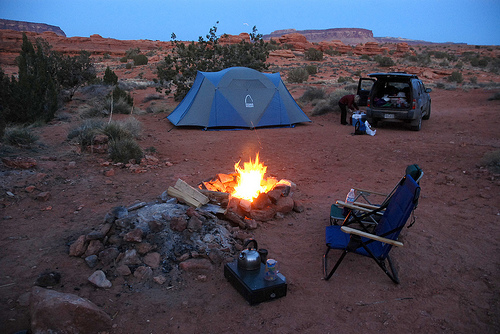 Back in the 1930s an organization of climbers and outdoor adventures called The Mountaineers came up with a list of ten outdoor safety essentials. These Ten Essentials are recommended for safe travel in the backcountry and it is a good idea to have these items handy during any camping trip be it a weeklong backcountry excursion or a weekend car camping trip.
Back in the 1930s an organization of climbers and outdoor adventures called The Mountaineers came up with a list of ten outdoor safety essentials. These Ten Essentials are recommended for safe travel in the backcountry and it is a good idea to have these items handy during any camping trip be it a weeklong backcountry excursion or a weekend car camping trip.
The Ten Essentials have evolved over the years to reflect modern advances in gear. The original list included a map and compass separately, but are now listed under the umbrella “Navigation” alongside GPS units and altimeters.
Packing the following items on any camping or backpacking trip is a good habit to get into. Hopefully you won’t need these all on your camping trip, but if the situation arises you will be thankful you have all the necessary gear to keep you safe. The Ten Essentials are also a great base for a home or car emergency preparedness kit.
1. Navigation
Always carry a map and compass. Sounds basic, but it is frightening how many times I’ve taken off into the woods without these two items. If you’re traveling in a rainy area, it is a good idea to pick up a waterproof cover for the map. National Geographic makes some sweet topo maps that are both waterproof and tear resistant.
Remember that a GPS is not a substitute for a map and compass. Handheld GPS units are electronic devices so they can fail for many reasons. You could be in some serious trouble if you rely too heavily on your GPS and the batteries fail or you can’t get a decent signal. Always carry a map and compass and make sure you know how to use them.
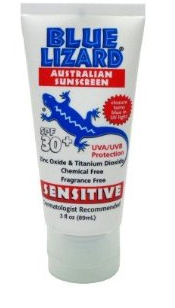 2. Sun protection
2. Sun protection
Sunburn and heat stroke can put a bit of a damper on your camping trip. Always carry sunscreen, sunglasses, and sun protective clothing like hats and clothing with UPF protection. All sunscreens are not created equal, dermatologists recommend using a sunscreen that protects both UVA and UVB rays. Look for sunscreens that contain the active ingredients avobenzone, zinc oxide, or titanium dioxide. I recommend Blue Lizard sunscreen or Alba with titanium dioxide.
3. Insulation
Conditions can change abruptly especially when camping in the mountains. You will always want to carry an extra layer of clothing to prevent hypothermia if weather conditions take a turn for the worse. Extra clothing can also be used to protect against bugs and the sun like ExOfficio’s Insect Shield clothing line. Clothing can also be act as a bandage if need be.
 4. Illumination
4. Illumination
Flashlights and headlamps protect against all sorts of injury when traveling after dark. Whether making a midnight bathroom run or trying to set up your campsite after dare, a good LED headlamp will be one of the Ten Essentials you will use on every trip.
A flashlight can also act as an emergency signal if you get separated from your party or if you need to signal for help. Always carry extra bulbs and batteries.
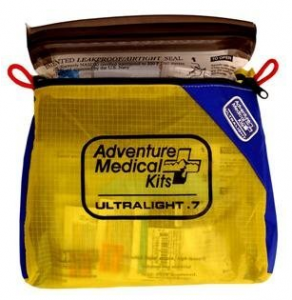 5. First-aid supplies
5. First-aid supplies
Adventure Medical Kits put together some excellent first aid kits from full-on expedition kits to ultralight weekender kits. I always add some Moleskin to any ready made first-aid kit, trust me your feet will thank you. Experts also recommend that you add a backup of your personal medications to your first aid kit so you will never be without your important medications in case you lose them or forget them at home.
You can also make a first aid kit from materials you may already have at home. Just make sure to include various sizes of bandages, antibiotic ointment, adhesive tape, gauze, and over the counter medications like antihistamines and anti-inflammatories.
6. Fire Starters
What’s camping without a campfire? Campfires are not just for S’mores and sing-alongs, fire can prevent hypothermia and be used as a signal to call for help. Always carry multiple sources to start a first like a butane lighter and waterproof matches. First starters are great if you are camping in wet and humid places or if you need to make a first fast.
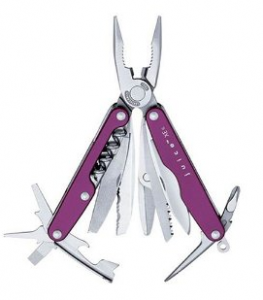 7. Repair Kit and Tools
7. Repair Kit and Tools
Multi-tools are a man’s best friend. These MacGyver like tools can do anything from making kindling for starting a fire and cutting rope or clothing in emergencies to slicing cheese and opening your beer bottle. Look for a multi-tool with a basic knife, a few screwdrivers, can opener, and a scissors like the popular Leatherman Multi-Tool.
If you are traveling with an inflatable sleeping pad or mattress you’re probably also going to want to travel with a repair kit or you might find yourself sleeping on the bare ground which is both uncomfortable and cold.
8. Extra Food
Whenever traveling into the backcountry, it is a good idea to carry an extra day’s worth of food. Food can actually prevent hypothermia and the digestion process can help keep you warm at night. I personally recommend some dark chocolate before bunking down, I swear it helps keep you warm all night.
Make sure that you carry plenty of no-cook foods like beef jerky and trail mix. Snacks provide quick energy and are readily available in case you can’t get your camping stove to work. Energy bars are a great way to go, find out how you can save on energy bars and gels with Amazon’s Subscribe and Save program.
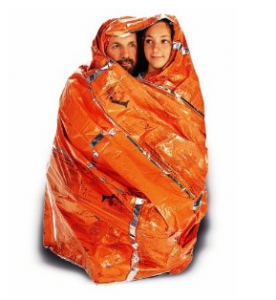 9. Extra Water
9. Extra Water
When traveling in the desert, I’ve gotten into the habit of carrying excessive amounts of water. Dehydration can come on wicked fast especially in hot and arid climates. Always make sure to have an over abundance of water with you on any camping trip. It is also a good idea to travel with a water filter or purifier.
10. Emergency Shelter
An emergency shelter is a new addition to the Ten Essentials. This recommendation is mostly aimed at day hikers; most campers don’t have to worry about this because they’ve packed their tent. A reflective emergency blanket can serve as both an emergency shelter and a first aid covering for an injured person. An emergency blanket weighs next to nothing and if you ever find yourself in the situation, you’ll be glad you have one.
In addition to these essentials, it is a good idea to carry along a tent repair kit, insect repellent, cell phone, emergency radio, and plenty of knowledge on how to safely use these essentials.
[Photo courtesy of Rob Lee]